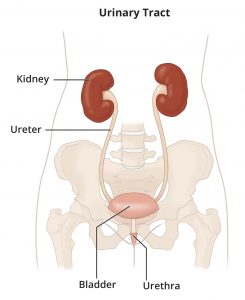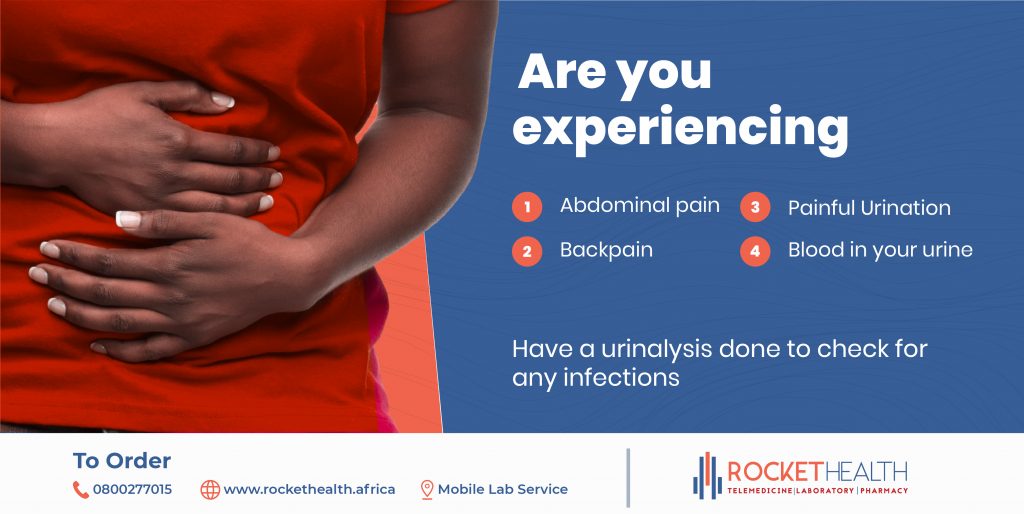Urinary tract infections (UTI) account for the majority of hospital visits globally. Sound knowledge of factors associated with UTIs may allow you timely intervention to easily bring the infections under control.
Let’s start with understanding the anatomy of the urinary tract.
The urinary tract is composed of the kidneys, ureters, bladder and urethra. Is divided into the upper and lower urinary tract. The upper urinary tract is comprised of kidneys and ureters. The lower urinary tract is comprised of the bladder and urethra.

Urine is produced by the kidneys and through the ureter, is transported and stored in the bladder until one needs to pass urine. Urine is then passed out of the body through the urethra.
What is a Urinary Tract Infection (UTI)?
It is an infection in any part of the urinary tract. Can be divided into;
- Acute simple cystitis: infection of the lower urinary tract i.e in the urethra and bladder.
- Complicated UTI or Pyelonephritis: infection in the upper urinary tract i.e. the ureters and kidneys.
What causes UTI?
The most common cause of UTIs is a bacteria called E.coli. It is a normal bacteria in our intestines but when it gets access to our Urinary tract, an infection arrises.
Risk factors for UTI:
In women;
Women are at a higher risk of contracting UTIs because of the short urethra (measuring 4cm), compared to men who have a longer urethra(15-25cm). Therefore, the bacteria have a short distance to travel from the anus to the urethra.
In Men;
Men rarely get symptomatic UTIs, because they have long urethras of about 25cm long. As a result, organisms that cause infection have a longer distance to travel to the urinary tract. When they get a UTI, some of the symptoms may include; pain or burning sensation when passing urine, the need to urinate often, need to urinate suddenly or in a hurry, blood in the urine.
In children;
UTIs are a common problem among children, with a prevalence of 7%.
- Sex: Girls are still at a higher risk compared to boys, because of the short urethra.
- Age: UTIs are common in boys less than 1 year, and girls less than 4 years of age.
- Uncircumcised boys are at a higher risk of getting UTIs.

Symptoms and signs of UTI:
- Lower abdominal pain.
- The need to urinate often/suddenly.
- Burning sensation when passing urine.
- Blood in the urine.
- Fevers, pain in the flanks, back pain, nausea or vomiting (in case of complicated UTIs)
- Children under the age of 2 usually experience fever, have a low appetite and often act fussy.
Diagnosis of UTI:
- A UTI is a clinical diagnosis in those with the above symptoms.
- Urinalysis test in the lab can be used to confirm infection in the urinary tract.
- Urine culture and sensitivity for those with recurrent UTIs, or those at risk of multidrug-resistant UTIs.
Differential diagnosis:
- Pelvic inflammatory disease, vaginitis, urethritis in women.
- Urethritis, prostatitis in men.
Treatment of UTI:
- Our doctor will prescribe antibiotics if you have a positive UTI test.
- If the infection is in the bladder, you will take antibiotics for 7 days, if the infection is in the kidneys you will take antibiotics for up to 2 weeks.
Prevention of UTI:
- Drink plenty of fluids to prevent bladder infections.
- Urinate right after sexual intercourse to help flush out germs that could get into the bladder during sex.
- Avoiding spermicides (sperm killing creams); these kill the normal vaginal flora bacteria which are normally protected.
- Treating the UTI with antibiotics prescribed by the doctor.
Are you feeling similar symptoms? Speak to our doctor today for diagnosis and treatment.
Call 0800277015 to order a test.
Author: Dr Gloria Nakiboneka Lutalo


